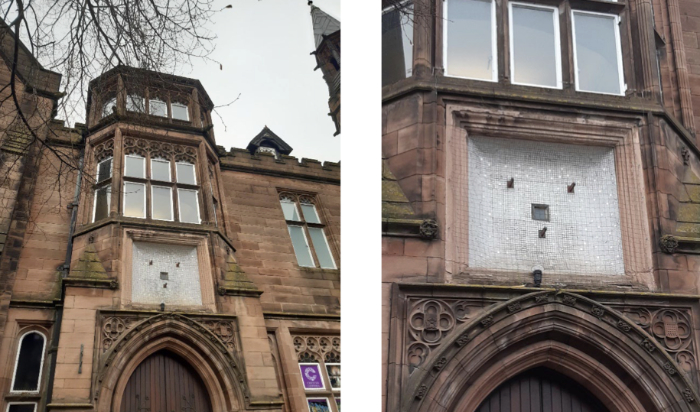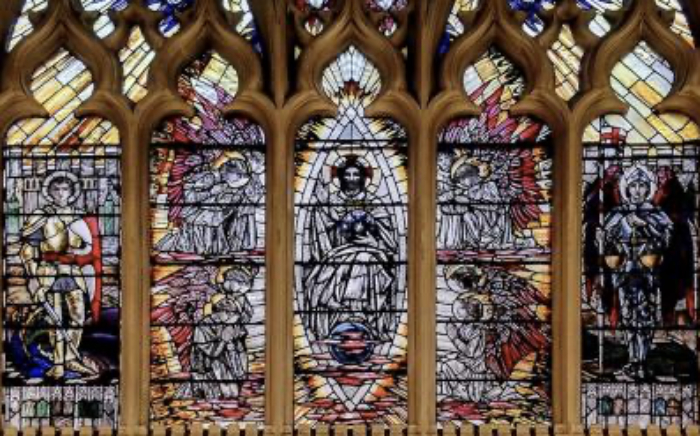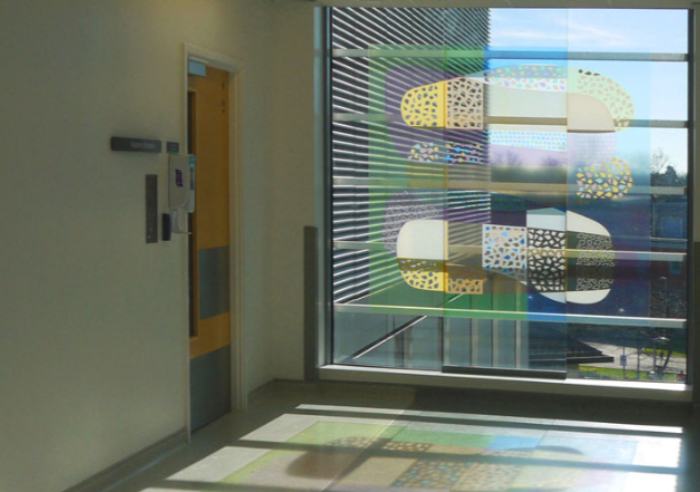
All about the design
Architectural glass artist Sasha Ward has worked on over 100 commissions for buildings across the UK, but her repertoire includes art on a smaller scale. Linda Banks finds out more.
What led you to start working with glass?
I started saying I wanted to do stained glass when I was at school and was being encouraged to choose a career. I thought it represented a good combination of my interests – pattern, colour, architecture, craft – and I thought it was an original choice as stained glass was not in fashion at the time (this was the mid-1970s). I had a set of postcards of the windows of Chartres Cathedral; it was these images that I remember as the deciding factor. When I went to art school I chose to do my foundation course at The Central School of Art because it had a stained glass department that I could use.

What glass techniques have you used and which do you prefer?
The aspect of stained glass that I have always been most interested in is glass painting. As I continued my studies in art school, I desperately wanted to paint with transparent colours on glass and to get rid of the lead lines. This led to me working with transparent enamels and to try and find different ways of joining glass pieces together. When I started making work for buildings – which were mostly modern ones – this problem disappeared as the glazing bars around large windows of float glass did the job for me. However, the joining problem comes back when I’m making something that is not for a building. I’ve started using lead again and am loving it for its versatility and longevity.
What is your creative approach? Do you draw your ideas out or dive straight in with the materials?
I think my strength is in my sense of design as much as my use of materials. I do pages of drawing to work out a design, and lots of glass samples to check colours and textures against each other. Then I work to a detailed plan for the making stage, I don’t deviate from the plan at all although this doesn’t stop the unexpected happening to enamels in the kiln.
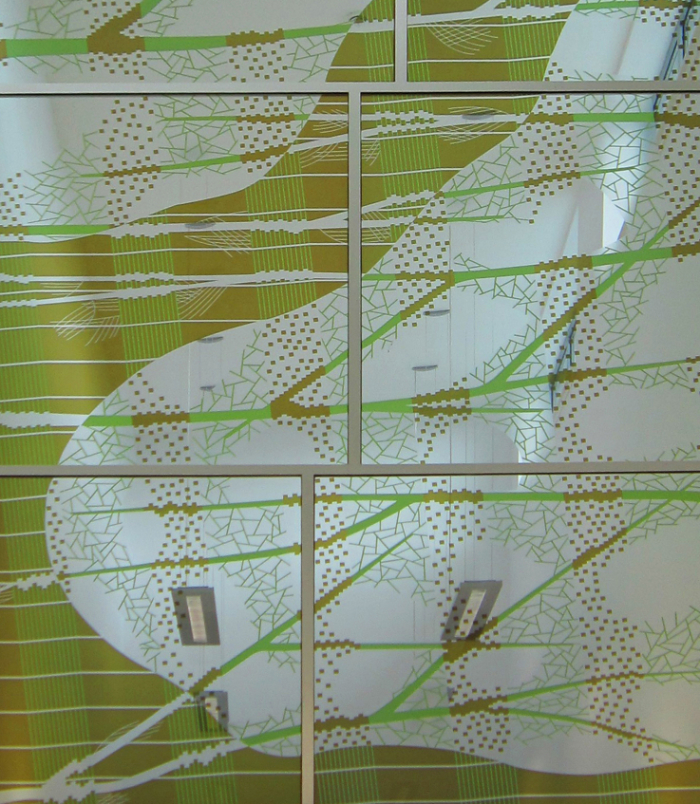
You have undertaken many architectural commissions. How do you approach these large-scale designs?
I use pattern and repetition in large-scale designs, echoing the shapes and proportions in the architecture. I always make models while I work out my approach to a design that is site specific, if I’m working with a manufacturer, this is the only hands-on work I get to do during the process. With experience, I can work on a small scale and visualise the work as it will be in the building; when you’re working to commission, no one wants any surprises.

Sometimes you work with materials like acrylic, adhesive vinyl and window film. Why is this?
I have used other materials for commissions either because of the low budget, the short lifespan of the project or reasons connected to health and safety in the built environment. Although these considerations sound like constraints rather than exciting opportunities, I have embraced the way that working to commission in unexpected places has led me to doing things I wouldn’t have chosen to do, learning new skills along the way. As I consider design to be the most important aspect, I’m happy to see my work translated into a variety of different materials.

You have collaborated with Ray Ward to create stained glass pieces based on his drawings. How did this come about?
I have shared a studio with Ray Ward since we met as art students over 40 years ago. It goes without saying that I really like his work. Ray’s drawings remind me of the characters and details in medieval stained glass that drew me to the medium in the first place. Over the years people have suggested that we should collaborate. Then the COVID-19 lockdown and an exhibition at Norwich Cathedral provided us with the perfect opportunity. However, we don’t really collaborate; a drawing of Ray’s is chosen, then I photocopy it, choose a colour scheme and paint directly from the copy.

What is your favourite tool or piece of equipment and why?
All I need, apart from hand tools, are my massive kiln and my sandblaster. I couldn’t do anything without a sandblaster. Roughing up the surface of the glass, or removing fired enamel, is as important to my process as putting it on.
Do you have a favourite piece you have made? Why is it your favourite?
One of my favourite pieces is a window I made in 1998 for Frimley Park Hospital, which is about to be demolished as the hospital is being redeveloped. It is a very successful translation of my original black and white drawing. It looks a bit like a quilt and is my version of the cliched subject matter stipulated in the brief, which was sunrise (the window faces east). This window marked a turning point in my thinking, as I realised how I could make quite large windows myself during the manufacturing process. As a result I ordered my big kiln so I could carry out these projects.
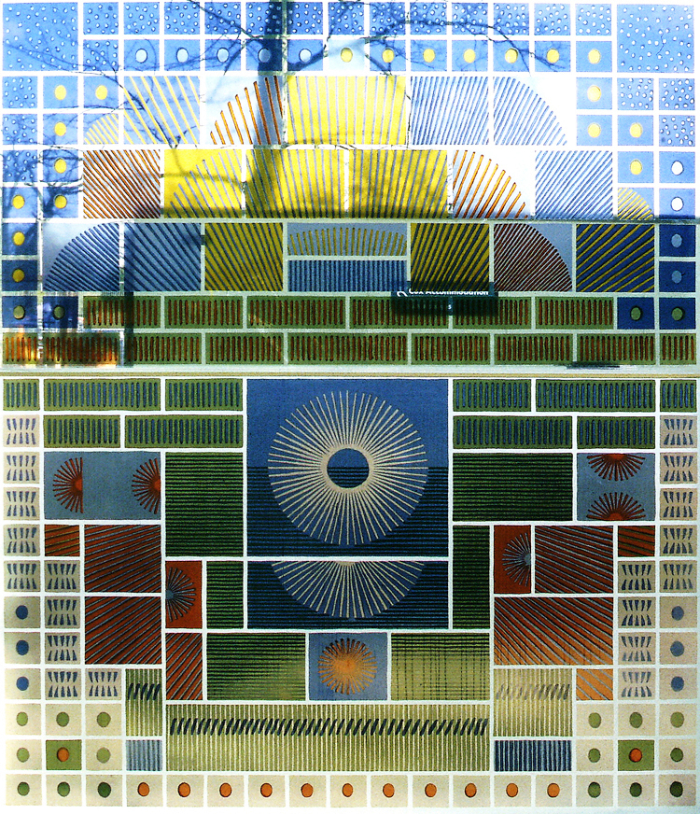
What advice would you give to someone starting out on a career in glass?
I think that it is important for anyone starting out in glass to stick to their own path, rather than worry about what everyone else is doing. There are no rules when you choose a career in art, so the advantage should be that you can do things in your own way. This doesn’t mean taking the easy path. I think you need to focus on getting your work made in the best way, rather than on enjoying yourself during the process.
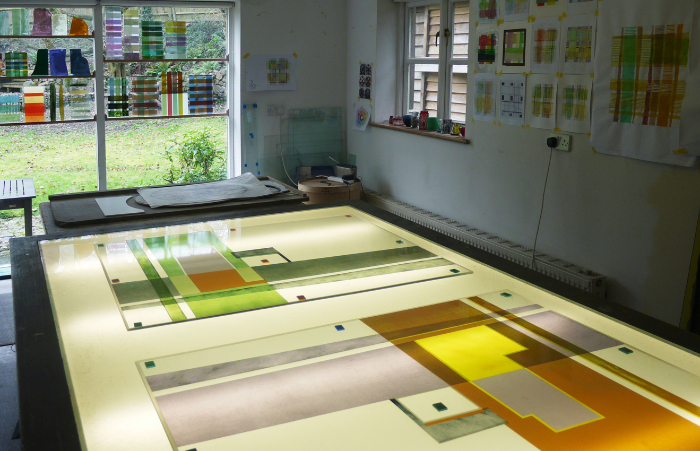
Where is your glass practice heading next?
I’m at the stage where I’m thinking about what I want to leave behind. I have realised that a lot of the technologies used in my commissioned work, for example double glazed units, have a limited life span in buildings that may not themselves last. Rather than looking for commission opportunities, I am concentrating on making pieces of work that I actually want to make, drawing on my stack of accumulated materials and my archive of unrealised design ideas.
About the artist
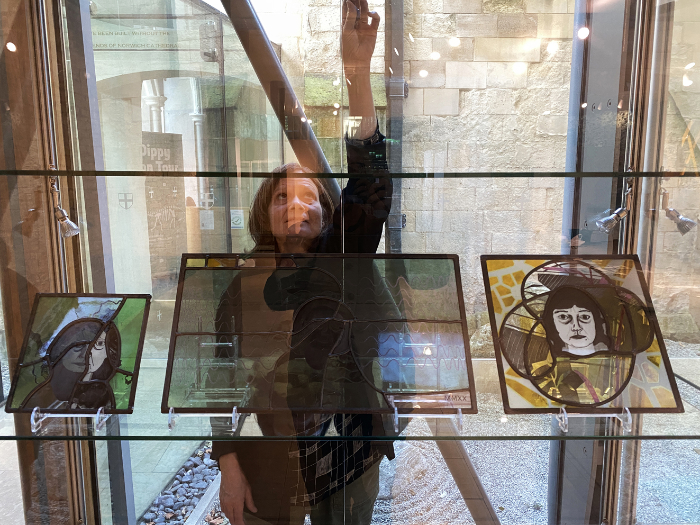
Sasha Ward is an architectural glass artist who has designed, and sometimes made, over 100 commissions for buildings throughout the UK. She has a degree in fine art from Trent Polytechnic, Nottingham, and a Masters degree in glass from The Royal College of Art, London.
Find out more via her website: https://www.sashaward.co.uk or follow her on X: https://twitter.com/sashawardglass and Instagram: https://www.instagram.com/sashawardglass/
Main feature image: Entrance window, Paediatric Mortuary, Manchester Children’s Hospital, (2019), measuring 2.4m x 2.3m.
All photos by the artist except the last one.
